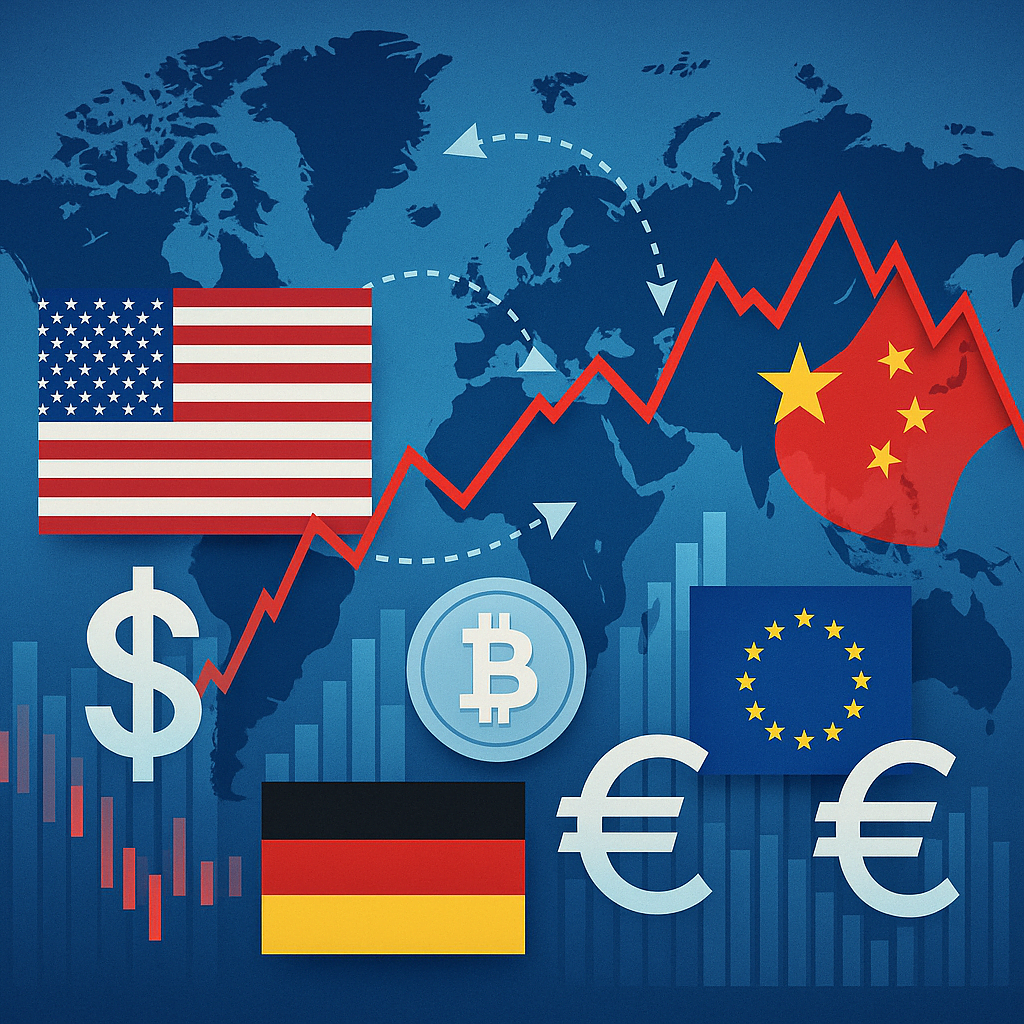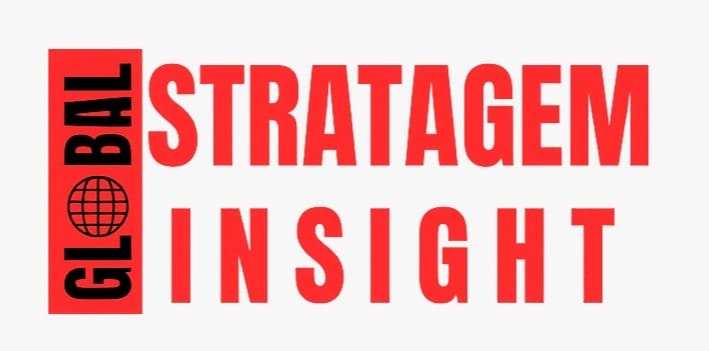The Economic Impact of Trump’s 2025 Tariffs: Global Market Reactions and Future Risks

Market-Fluctuations-in-2025-The-Fallout-of-Trumps-Tariff.
Market Fluctuations in 2025: The Fallout of Trump’s Tariff
The global economic stability in 2025 faces total disruption because Donald Trump has intensified his tariffs against major economic powers. Trump’s America First strategy now targets six additional countries alongside China including Germany as well as Mexico, Canada, Japan followed by Switzerland. Earthwide markets demonstrate all-encompassing reactions due to Trump’s justified trade barrier implementation which uses national defense and deficit reduction as its premise.
The market responded dramatically at first to Trump’s introduction of tariffs in his 2018 presidency before adapting to the changes gradually. In 2025, the story is different. The worldwide market remains delicate because it recovers from the post-pandemic phase while facing escalating international conflicts as well as persistent supply chain breakdowns. As a result of the swift and sudden implementation of the new trade barriers investors experienced panic while major market indices witnessed substantial price fluctuations.
Immediate Impact on Markets
Retail industries and financial markets experienced immediate significant drops due to this event. The Dow Jones Industrial Average recorded a 6% decrease right after Trump announced his decision and European stock market DAX lost 4% alongside China’s Shanghai Composite Index plummeting 5%. The market value of technology firms declined because these businesses rely heavily on international supply chains along with overseas client bases. Platinum and palladium values have increased to surpass $2,500 per ounce because investors want traditional safeguarding elements during uncertain times.
Currencies have not been spared. The Mexican peso together with the Turkish lira lost a substantial portion of their value relative to the U.S. dollar during this period even though Swiss francs and Japanese yen demonstrated abnormal market fluctuations. The market faces two simultaneous threats of rising expenses alongside world economic slowdown which is leading to major portfolio restructuring among investors
Winners and Losers: A Complex Picture
Protectionist measures generate both positive effects and negative outcomes as they affect different groups of society. The short-term advantage comes to American industries specifically in steel production and aluminum sector and in various agricultural sectors through their protection against international market competition. The manufacturing sector consisting of small-scale businesses experienced rising orders because cheaper imports failed to compete effectively anymore.
These benefits do not outweigh the financial expenses caused by protective measures on the economy. The technology and automotive sectors together with major American exporters have become targets of retaliatory tariffs put into effect by trade partner countries. Different European Union member states adopted new tariff measures against American whiskey alongside jeans and motorcycles. The strategic move by China to target U.S. agricultural products has harmed American soybean and pork farming businesses.
Retail operations and end customers alike are experiencing negative impacts from these events. Rising operational expenses are being shifted to customer bills which results in increased cost of living during a period of rising household financial burden. Economic power among medium and lower income households will decrease as the buying power weakens thus affecting consumer spending which drives the American economy forward.
Global Supply Chains Under Pressure
The tariff policies have led to a rapid breakdown of worldwide supply chain operations. The practice of spreading production operations across various international borders through globalization had operated for several decades to achieve lower costs and more efficient processes. The policies imposed by Trump regarding tariffs drive businesses to reassess their current strategic approaches.
Global businesses turn to nearshoring alternatives because they intend to relocate manufacturing operations near their target markets. Supply chain diversification was expected to help Mexico and Vietnam until Trump applied tariffs to these nations thus escalating the market complexity. Companies must decide between three unappealing options which include maintaining elevated costs or moving operations while incurring significant costs or implementing cost increases for their consumers.
Complex international supply chains that serve electronics as well as pharmaceuticals and automotive manufacturing experience severe disruption because of this problem. Experts forecast that changes to business supply networks will require many years and this will slow down innovation while increasing costs in various business areas.
Investor Sentiment: Fragile and Fearful
The financial market experiences profound nervousness with investors. According to the International Monetary Fund (IMF) their updated global growth projection for 2025 decreased by 1.2% from their previous estimate with “escalating trade tensions and protectionist policies” highlighted as key contributors to the downgrade. Nowadays the bond markets display cautionary signals through dramatic U.S. Treasury yield decreases as investors seek maximum safety from their investments.
Private equity firms together with venture capitalists are becoming increasingly hesitant in their investment activities. Start-up ventures together with innovative technology projects require economic stability to thrive so they have experienced significant investment slowdown. Long-term business decision-making shifts into a speculative state because businesses cannot obtain future trade policy clarity which restricts economic vitality.
Younger investors turn towards alternative investments that include cryptocurrencies because of their volatile market behaviors since traditional financial markets cannot fulfill their needs. Bitcoin and Ethereum reached higher values but analysts state their price swings make them unfit for hedge purposes.
Diplomatic Fallout and Geopolitical Tensions
The trade measures create problems for both market systems and produce tensions between the United States and its primary geopolitical partners. The leaders of Germany and Japan have brought forward their serious concerns by saying ongoing economic aggressions will permanently sever transatlantic and Pacific alliances.
Through its Belt and Road program China aims to build new trading alliances with emerging markets which eliminate US economic influence in order to support its enhanced economic cooperation with these markets. The political reorganization gives rise to enduring effects that threaten to reduce U.S. dominance in economic leadership.
The late 2025 G20 summit will display different approaches to global trade between competing leaders during its meeting. The Trump administration intends to pursue its “fair trade” stance which creates obstacles for swift agreement despite other leaders advocating for greater free trade agreements.
Is There a Path to Stability?
A road exists that can lead towards stabilizing the situation. Previous trade wars have become highly unpopular when citizens begin to realize exactly how much damage these confrontations create in the real world. Business executives together with consumer protection organizations and members of congress from both sides of the aisle are actively trying to influence the White House into less aggressive actions.
Trump shows indications of preparing to bargain for exceptions in crucial industries which support vital national interests or hold strong political influence within the United States. The turbulent approach to policy making by Trump causes challenges when trying to predict how these diplomatic negotiations will play out.
No single market direction appears stable at this time which requires investors to remain flexible as well as properly diversify their portfolios. The Federal Reserve along with central banks possess the power to minimize economic growth instability through modifications of their monetary policy tools.
Conclusion: A Risky Gamble
The economic strategy of implementing tariffs during 2025 becomes a dangerous bet for the national prosperity. The measures intended to restore American manufacturing and lower trade dependency with foreign countries caused widespread market instabilities while weakening international partnerships along with creating new economic uncertainty in this sensitive geopolitical framework.
Present-day markets opt for clear information along with open borders. Protectionism creates immediate political advantages even though it results in permanent damage to economic stability along with lasting prosperity. The global reaction to these events demonstrates that detachment from international economic operations creates more complications than benefits in systems connected by global trade.



